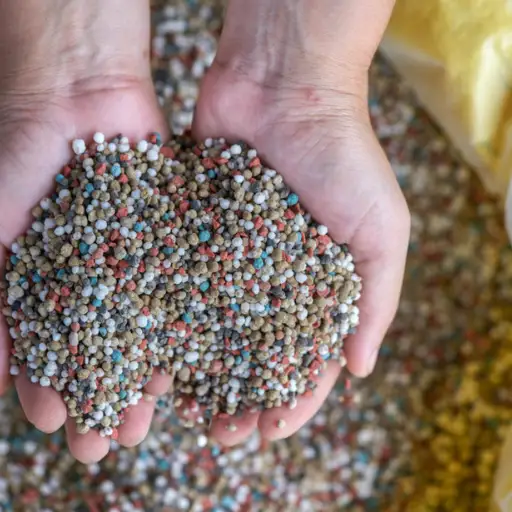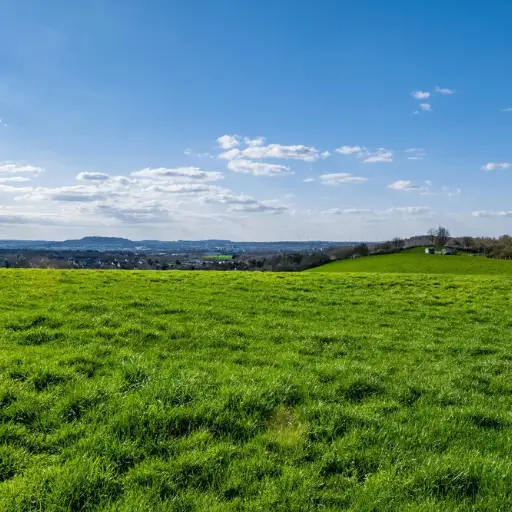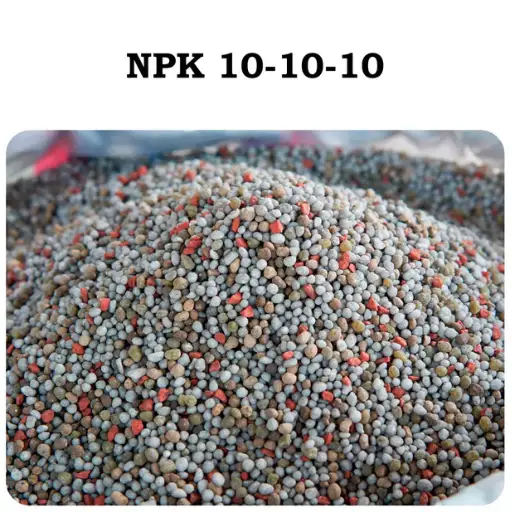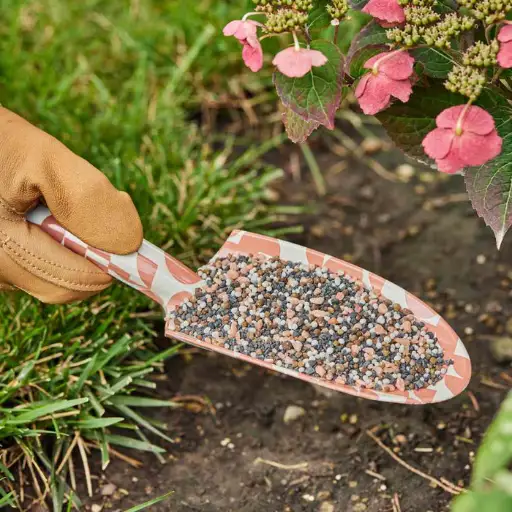In this blog, we delve into the world of gardening, specifically focusing on the use of all-purpose 10-10-10 fertilizer for plants. This balanced fertilizer is a staple among gardeners due to its versatility in promoting healthy plant growth across a variety of species. Whether you are nurturing flowering plants, vegetables, or trees, understanding the role of each nutrient—nitrogen, phosphorus, and potassium—is crucial. We’ll explore the benefits of using 10-10-10 fertilizer, how it affects different plant types, and provide practical tips for its application to maximize your garden’s potential. This article aims to equip readers with the knowledge needed to make informed decisions about fertilization to achieve lush, thriving plants.
What is 10-10-10 Fertilizer?

NPK Ratio 10-10-10 Importance Explained
Twelve percent is called the all round fertilizer; it is named as above because of the npk ratio which is a shorthand for nitrogen (n) phosphorus (p) and potassium It contains each of these nutrients in equal amounts equal to ten percent of the substance. Nitrogen must be applied in large quantities in order to enhance leaf development since nitrogen is critical in the photosynthesis process. Flowers and fruits can be developed because phosphorus aids in the establishment of robust root systems. Potassium assists in maintaining the health of the plant by increasing resistance against diseases, as well as against the effects of drought. Once more, any garden or orchard will benefit from the balanced nutrient mix provided by 10-10-10 fertilizer as it provides the basic building blocks for healthy development of plants and a large variety of them.
Benefits of Using All-Purpose Fertilizer
There are several advantages that gardeners get from using 10-10-10 fertilizer. There is a balanced nutrient distribution that makes it easier to fertilize plants in the beginning since they won’t have to use varying types of fertilizers. Beginners or those working with many different houseplants will find it particularly useful. Utilizing 10-10-10 fertilizer can benefit vegetation growth and yields, since there are onions available that can support both deep root structures and well-developed foliage. Such a fertilizer is expected to benefit the plant by reinforcing its ability to produce larger, prettier flowers and fatter fruits while helping to prevent environmental and disease damage.
How to Select the Most Suitable Fertilizer for Your Plants
In most cases, selecting the most appropriate fertilizer, for example, involves examining the specific requirements for a particular plant and the general effects of the socio-economic aspects within which the garden is set. You can establish whether the plants need more nitrogen for foliage, phosphorus for roots and blooming, or potassium for health and durability. Also, it is a good idea to advise the soil testing since, in the long run, this will aid in the application of fertilizers that correct deficiencies without making the soil exceedingly fertile. Decide if the use of chemical fertilizers that are soluble in water is compatible with your practices and environmental issues.Chemicals may be used in granular forms which are slowly released or in liquids which would enable the rapid uptake of the nutrients. In this manner, you will ensure that the fertilizer used encourages plant growth while taking appropriate measures so as not to reduce your garden’s productivity.
How to Use 10-10-10 Fertilizer Effectively?
Application Methods for Lawns and Gardens
It is necessary to evaluate the square footage that requires treatment while applying the 10-10-10 fertilizer on the lawn. Employ a drop spreader or reception device. Follow the suggested settings as detailed in the manufacturer’s guidelines. Fertilizing the lawn the day after a rain or after watering it helps prevent burning making it the most suitable option. While preparing the garden, mix the granular fertilizer with the soil or lightly sprinkle it over the growing plants and water immediately so that the nutrients can seep into the soil. Depending on the culture, the water soluble fertilizer dilutions may be repeated weekly or every two weeks and during dry seasons, the treatments can be as frequent as six weeks.
The Best Time for Plant Fertilization
Applying fertilizer on your plants can boost their growth and help them utilize the nutrients most effectively, but the timing with respect to the plans made at the beginning is very crucial. Established lawns and gardens should ideally be fertilized once in early spring at the onset of the growth season for most plants. This is important in ensuring that there will be enough nutrients to facilitate the development of roots and leaves within a short period of time. There is also the late autumn fertilization which is aimed at aiding in preparing the roots for winter. Extreme heat or draught should also be avoided to prevent the plants from getting stressed. Pay attention to the requirements of your particular varieties: some flowering plants, for example, may need to be fed in mid-summer to help enhance the flowering.
How Much 10-10-10 Fertilizer to Apply?
How much 10-10-10 fertilizer to use will also depend on such factors as the types of plants you are fertilizing and their nutrient needs. For example, for lawns, it is usually recommended to use about 1 up to the maximum of 1.5 pounds of 10-10-10 fertilizer for every 100 square feet of lawn area. In vegetable gardens, 10-10-10 with such amounts as from 1.5 to 2 pounds for the same area is used. Applying around 0.5 to 1 pound of 10-10-10 fertilizer for every 100 square feet is usually enough in ornamental plants or flowers. After planting processes, one has to make sure the fertilizers and other materials are well mixed in the soil, and the plants are well watered to avoid overconcentration of nutrients which might be detrimental to the growth of the plants.
What are the Advantages of Granular vs Liquid Fertilizer?

Granular Fertilizers: Strengths And Weaknesses
One of the benefits is that granular fertilizers are easy to use and have a long-lasting effect. They are applied once and take a long time to break down, which means that plants receive constant nourishment and are ideal for the long-term care of gardens and lawns. Moreover, they are less susceptible to being leached away by heavy rainfall and help in the judicious release of soil nutrients. For many garden types, the most practical choice is to use granular mulch.
On the other hand, granular fertilizers do present some disadvantages. For example, they often take a while to mix with the soil; this can be a problem for active ingredients that need to be watered after they are applied because the active ingredients will take the time to activate. Even distribution of nutrients is another problem; if there is improper application of nutrients, then they could be poorly distributed, and as a result, some areas would have faster growth than others. Finally, when using solid formulations, the response of crops is apparent later in comparison to liquids that are absorbed and utilized much faster by plants.
Liquid Fertilizer: When Should You Use It?
Liquid fertilizers best come into play when plants need a quick supply of nutrients. They come in handy, especially during the croppings and flowers generation, as plants rapidly take them up, leading to faster visible benefits. If your plants are suffering from nutrient deficiencies, there is need to apply liquid fertilizers so that recovery is faster which ensures much healthier and vigorous growth. They are helpful in container gardening and hydroponic systems or where a hurry is needed in altering the nutrient profile. In the case of gardens with weak soil structure, liquid fertilizers too can be very useful in supplying nutrients for plants without incorporating them into the soil.
How to fit Both into One for Perfect Growth
The integration of both liquid and granular fertilizers can achieve the desired plant growth. This integration helps to obtain maximum advantages from both types of fertilizers. In this case, start with the granular fertilizers as the basis, because they provide the advantage of slow release: nutrients will not be used up for a while. Granular fertilizers should be applied at the beginning of the growing season before water and planting to incorporate into the soil. Water should be used to encourage the granular fertilizers and plants after incorporation. Liquid fertilizers that provide fast action should then be employed during significant growth periods such as at the time of sprouting or flowering. Thus, in between these two extremes, growth is also provided where the granular fertilizers need it. The ratios and frequency should be modified according to the environments seen, in order to prevent a vegetative and flowering growth phase to be the same throughout the season.
What Plants Benefit from 10-10-10 Fertilizer?

Best approaches when Fertilizing Vegetable Gardens
When establishing vegetable gardens, the application of a well-balanced 10-10-10 fertilizer is generally useful due to its equal amounts of nitrogen, phosphorus and potassium. Before application, check the soil for the available nutrients and those that need to be added. Apply the 10-10-10 fertilizer as per the recommended guidelines on the package, normally at the beginning of the growing season. Incorporate it into the soil in the vicinity of the roots during its application and prevent application near the roots to avoid burning of the roots by the fertilizer. Throughout the growing season, particularly at times of the greatest flowering and fruiting development, side-dress the plants with the 10-10-10 fertilizer. Prevent the plants from drying out by watering, which speeds up the process of dissolving the fertilizers into the soil so that the plants can absorb them more efficiently. Lastly, the plants should be checked for any signs of nutrient deficiency or excess, and the application of fertilizers should be rectified for best performance.
10-10-10 Dosage for Flowering Plants Fertilizer
With a well-balanced nutrient composition, a wide range of flowering plants can benefit from the 10-10-10, providing excellent choices for their fertilization. The nitrogen component enables dense and green vegetative growth as well as phosphorus that supports root growth and strong blooming. There is positive development in plants thanks to Potassium as well to the entire resistance of the plant Overall health of the plants is important. Apply at bloom initiation stage for the best use of this fertilizer together with flowering plantstage. This should be done by applying the fertilizer on the topmost layer of the soil and avoiding placing it too near to the base of the plants so that they do not get burnt. Soon after application, water well in order to enable the nutrients to wash into the soil and root system. Watch the plants and modify the application of fertilizers as necessary; these should especially be done in cases of obvious deficiency in nutrients. Such a fertilizer intake should occur during and the active growing season in order to secure flowering and sturdy growth of the plants.
How to Apply Fertilizer to Shrubs and Trees
Similar to shrubs and trees, the fertilization of shrubs and trees should be done with care not to over-fertilize. To establish whether fertilization is required, identify the specific area of shrub or tree that requires appropriate nutrients by testing its soil. Next, choose an appropriate fertilizer, preferably well-balanced and slow-release. Slowly cover the entire area beneath the canopy of the trees and shrubs, not too close to the trunk so as to minimize the chances of root burn. Make sure that the fertilized area matches the drip line where the feeder roots are located. After fertilization, the area should be deep watered to dissolve the nutrients and ensure they penetrate the root zone. Ideally, repeat this practice once every year during the onset of the growing season for the plant in early spring. Continuously observe the state of the plants and increase or reduce the level or additional types of fertilizers only if growth at the time and symptoms indicate nutrient deficiency.
How to Store and Handle 10-10-10 Fertilizer?

10-10-10 Fertilizer: How to Store for Best Quality and How to Use Safely
I have a tendency to store my 10-10-10 fertilizer in a cool, dry area. Long periods of heat and moisture will ruin the product’s quality. The packaging must be properly sealed, otherwise the product will get exposed to moisture and/or become lumpy. I often have to store away from a food supply and also from children so as not to let them swallow or misuse the materials. If these measures are taken, I will be able to keep the pack safe till I need to use it again.
Fertilizer Use and Applying Techniques
I usually wear a glove and goggle to ensure my skin and eyes do not get irritated while applying the fertilizers. One should always apply fertilizers in an open place with good air circulation. Always put the amount that is said in the guidelines and anything more than that is bad, both for plants and the environment. If the answer is yes, then after doing so, it is wise to wash the hands to avoid swallowing traces of chemicals. Also, I don’t apply fertilizers when it is about to rain as there will be chances of runoff. I just have to be careful and I am good.
Reference sources
- The Spruce: What Is 10-10-10 Fertilizer, and When Do You Use It? – This article explains the composition and benefits of 10-10-10 fertilizer, detailing how it provides essential nutrients to plants.
- Covington Naturals: 10-10-10 Fertilizer: What it is and How to Use it – This source discusses the advantages of using 10-10-10 fertilizer in gardens, highlighting its role in soil improvement and plant growth.
- Yara Fertilizers: 10-10-10 Fertilizer: A Balanced Approach to Plant Nutrition – This page provides insights into the balanced nutrient profile of 10-10-10 fertilizer and its application in promoting plant health.
Frequently Asked Questions (FAQs)

Q: What is the meaning of 10-10-10?
A: It is a balanced fertilizer that contains three primary nutrients, nitrogen, phosphorus, and potassium, in equal amounts. This formula was developed with flowers, vegetables, and turf in mind, as well as other plants and crops that need them.
Q: How do I apply it, and what range should it be in?
A: Apply the fertilizer according to the guidelines provided on the package. In most cases, pebbles should be spread around the base area of the plants or mixed with soil before planting to avoid filling the soil necessary for rapid growth.
Q: Is it safe to use 10-10-10 fertilizer on my indoor plants?
A: Yes, 10-10-10 all-purpose fertilizer is suitable for indoor plants. However, it is advisable to thin it down or apply it sparingly in order to prevent under-fertilization because such plants require lower levels of fertilizers as compared to outdoor plants.
Q: What advantages can a plant gain from using a water-soluble fertilizer, such as 10-10-10, when it experiences translocation stress?
A: Water-soluble fertilizers such as 10-10-10 work efficiently as they are instantly available for absorption, making them suitable for direct application to plants. This leads to interference-free growth and is especially effective in plants that are required to be rapidly grown or during their growing periods.
Q: Would fruit trees benefit themselves if usually fertilized with a 10-10-10 fertilizer?
A: Certainly, fruit trees can be grown with 10-10-10 all-purpose fertilizer as it is a well balanced fertilizer. However, it is essential to take certain precautions on the amounts used since the requirements for fruit trees nutrition differ from those of other plants and in most cases are rather specific.
Q: In what circumstances should I use 10-10-10 fertilizer and how much proportion of it should I use on the trees?
A: In the case of a 10-10-10 fertilizer, the application is determined quite a bit by what the plants are and how large the area being fertilized is. Most of the time, though, if the label instructions are observed, such as saying something like so many lbs to a sq ft or area to roughly apply, the outcome will be very satisfactory.






